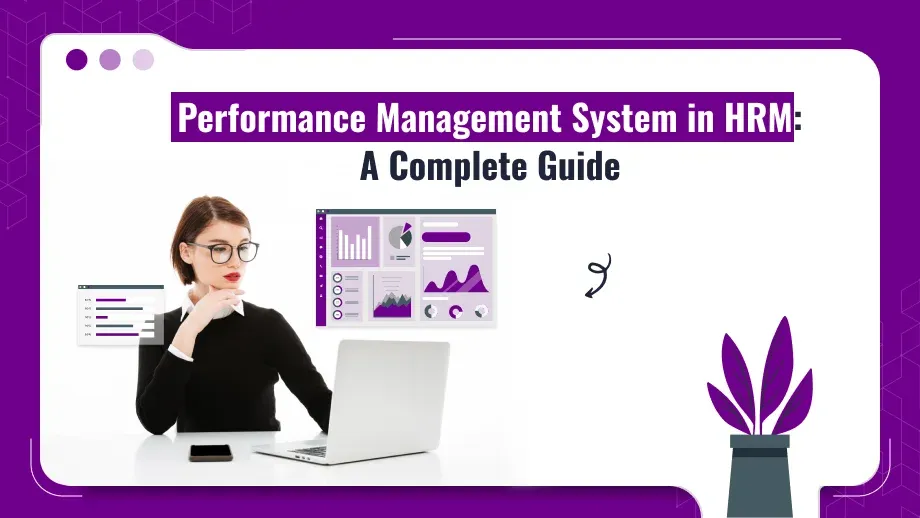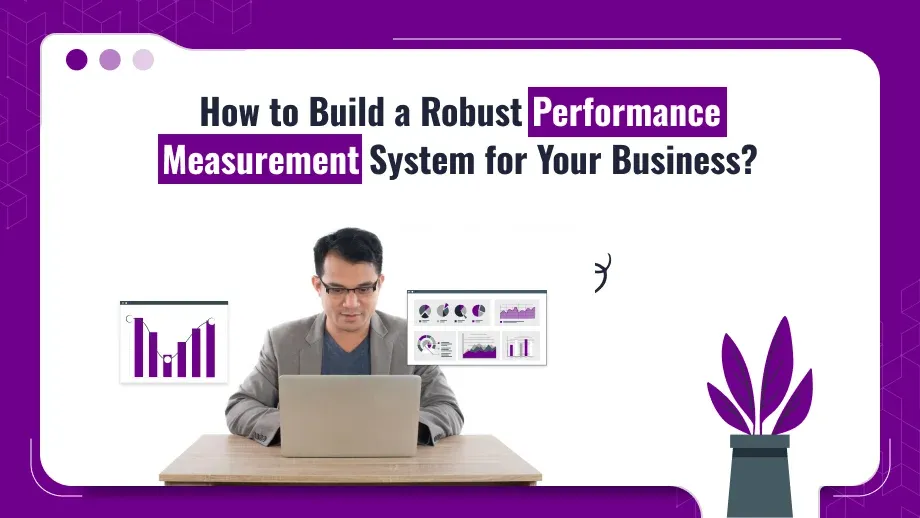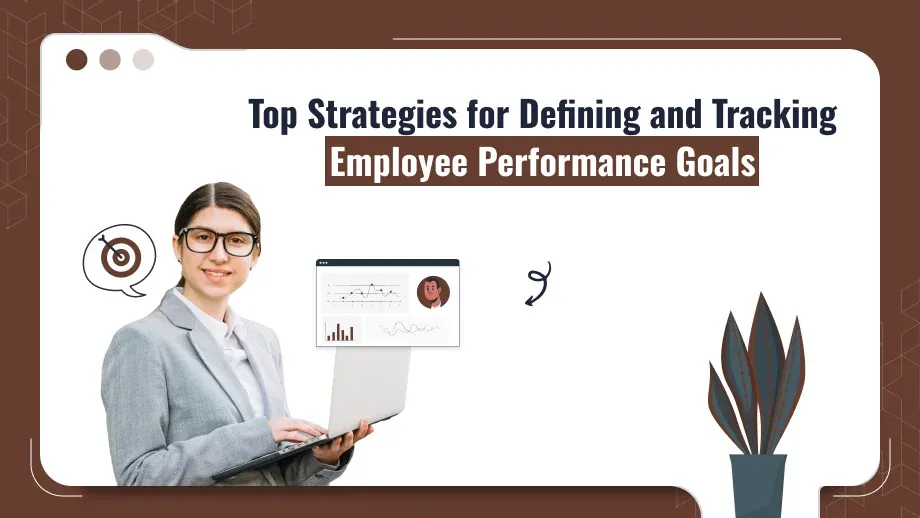
In the current business climate it is evident that Performance Management System in HRM has grown increasingly important. In order to keep an edge in the market and increase their competitiveness, they need to make investments in tools and processes that improve the performance of employees, make sure that employee contributions are aligned with objectives of the business, and develop an environment of constant advancement.
Performance management systems are not just a device to track the performance of employees. It’s an entire structure that lets organizations analyze, boost efficiency of their employees. With real-time feedback and development opportunities and alignment with strategic goals HR managers can establish an environment that encourages employees’ engagement as well as ensures success of their organizational goals.
In this article we’ll explore the performance management strategy, the advantages it offers, the instruments for facilitating the process, as well as best methods to establish a successful approach to managing performance. In addition, we’ll address the most frequently asked queries regarding PMS for HR professionals to better comprehend and utilize this essential element of HRM.
What is a Performance Management System (PMS)?
An Performance Management System (PMS) is a method of measurement that companies use to measure and enhance the efficiency of their employees. It helps HR departments ensure that employees’ contributions are in line with the corporate’s goals. An effective PMS includes creating clear expectations, constantly reviewing performance, giving periodic reviews, doing formal appraisals as well as preparing employees for their future success.
Performance management has historically was based on annual reviews as well as appraisals based on subjective criteria. Modern performance management methods emphasize continual feedback, data-driven insight and individualized plans for development. This allows companies to react more rapidly to problems with their performance, find potential employees with high potential, and take crucial decisions based on current analysis of data.
The use of modern performance management tool makes it much easier for HR experts to establish and oversee these processes effectively. It doesn’t matter if it’s setting goals for employees and tracking progress or conducting an evaluation, today’s tools offer comprehensive solutions to controlling performance at a moment’s notice.
The Importance of Performance Management in HRM
Effective performance management process is crucial to the overall success of the organization due to a variety of reasons.
- The alignment of goals: The management of performance helps ensure that employees’ efforts are aligned to the goals of the business’s strategy. The alignment creates an ethos of motivation for employees, and is a contributing factor to the overall growth of the organization.
- Continuous Improvement: By offering continuous feedback as well as opportunities to grow The management of performance helps employees develop professionally. The focus on continual enhancement increases overall efficiency as well as employee satisfaction.
- Feedback for Employees: Regularly scheduled reviews and rewards are important factors in boosting employee engagement. When employees feel respected and respected, they will be more likely to be motivated to do their highest level.
- Data-Driven Decisions: A data-driven performance management system gives HR professionals with crucial insight into the performance of employees. The data-driven information helps HR managers make educated choices about promotions, reward and professional growth.
- Retention and development: functioning PMS can help organizations detect skill gaps, top performers and future leaders. It helps retain the best talent as well as promoting internal development.
Looking to boost performance and streamline feedback in your organization?
Discover the benefits of a Performance Management System in HRM.
Key Components of an Effective Performance Management Strategy
Implementing a sound performance management strategy is a meticulous process of preparation and implementation. It should include a variety of elements that are in sync to guarantee continuous improvement in performance. The key elements:
1. Goal Setting
Set clear and measurable objectives is a key element of every performance management system. Goals for employees should be aligned with the goals of the organization and should be precise enough to give guidance. Goals are categorized as follows:
- Personal goals: What every employee must achieve in the course of their work.
- Goals of teams: How they can contribute to the overall achievement of the company.
- Corporate-wide objectives: The larger targets that determine the organisation’s plan of action.
Goals that are SMART (Specific measurable, achievable and Time-bound) are frequently utilized in management of performance because they give a precise plan to the achievement.
2. Continuous Feedback and Coaching
There is no longer a time when feedback was only reserved for annual evaluations. Nowadays, companies rely on continual feedback and coaching in order to help employees to improve. This method helps managers tackle the issues that arise in their performance and to provide praise when employees exceed or meet expectations.
The real-time feedback system not only assists employees to stay on track with their objectives, but it also helps to create an environment of accountability and cooperation.
3. Performance Appraisals
Though continuous feedback is crucial however, performance appraisals have a significant role to play in the evaluation of general efficiency. They provide a chance to evaluate employee contribution and discuss the needs for development and establish targets for the future.
Many organizations perform appraisals on a quarterly bi-annual or an annual basis. They typically include topics like goal attainment skills development, goal achievement, as well as behavior competencies.
4. Development Plans
Effective PMS concentrates on developing employees through identifying areas where employees are able to grow and provides customized development programs. The plans could include the development of training programs, mentorship as well as opportunities to accept different roles or challenges within the business.
When investing in the development of employees Organizations not only enhance the performance of employees, but also create a the foundation of future leaders posts.
5. Recognition and Rewards
Rewarding employees and acknowledging the work they do is a potent motivational tool. A successful performance management strategy includes both informal and formal rewards, like promotion based on performance, bonuses based on performance, as well as peer recognition programs.
When employees feel valued They are more likely to be motivated and dedicated to the company.
Performance Management Tools
In order to support the performance management process Many organizations depend on sophisticated tools for performance management tools. They assist HR experts automate their processes, collect real-time information as well as provide real-time insights to boost employee productivity.
The most popular characteristics of these tools are:
- Goal Tracking Tools: These tools monitor the progress of employees towards achieving their objectives. This tool helps managers keep up-to-date on team and individual results.
- 360-Degree feedback: tools that provide feedback about performance from many sources including colleagues as well as subordinates and supervisors. This method of evaluation provides a comprehensive information on employees’ effectiveness.
- Real-Time Analytics: Data-driven insight which allow HR managers to pinpoint performance trends as well as areas of improvement and potential employees.
- Automated Reviews: Performance Management tools usually have automated review systems which encourage managers to conduct regular assessments and to provide prompt feedback.
Most popular performance management tools are Superworks, BambooHR, Zoho People as well as Workday Each of them has unique tools to simplify process of managing performance.
The Performance Management Process
The process of evaluating performance is an ongoing process with several phases designed to encourage employee development and to ensure alignment with the company’s objectives. The following is a brief overview of most important steps:
1. Planning
When planning the process the managers collaborate with their employees to define clearly defined goals that match the strategic goals of the business. This will provide employees with a path for their success, and also ensures they are focusing their efforts on specific areas.
2. Monitoring
When goals are established Managers continuously track employee their performance in order to measure the progress made. It involves collecting real-time information giving feedback making changes as necessary. Monitoring ensures employees are on the right course and receive the assistance they require to be successful.
3. Development
The stage of development concentrates on assisting employees to improve their abilities and skills. Through training as well as mentorship or work experience, the development options are tailored to meet each individual’s career goals and needs.
4. Feedback and Recognition
Giving constructive feedback and rewarding successes is crucial to keep the motivation of employees and ensuring they are engaged. The feedback should be precise that is actionable and provided often to assure continual growth.
5. Review and Appraisal
When the cycle of performance, supervisors review their employees in formal manner to evaluate general efficiency. The appraisals are a chance to talk about the accomplishments of employees as well as areas that need improvements, and to set targets for the next year.
6. Improvement
Based on appraisals Managers are able to collaborate with employees on improvements strategies. The plans provide specific steps employees could take in order to boost their performance, and get greater results for the future.
Benefits of Implementing a Performance Management System
The introduction of a management performance system can bring numerous benefits to businesses. These are the biggest benefits:
- Improved Engagement of Employees: Regular evaluation and appreciation are happier and more inspired to work in their absolute best.
- Improved Goal Alignment: A PMS makes sure that the goals of employees are aligned with the larger goals of the organization which can help ensure that business success.
- Better productivity: Regular feedback and learning opportunities allow employees to enhance their abilities and be more effective in contributing to the company.
- The retention : top talent A well-functioning PMS can help HR departments identify employees with high potential and offer them the necessary support to develop, while decreasing the rate of turnover.
- Data-driven decision making: Performance management tools are able to provide in-real-time information and insight that allow HR managers to make educated choices about promotions, reward plans and plans for hrm performance management system.
Conclusion
An effective performance management program is vital to the success of an organization. Through providing constant feedback in a way that aligns goals to business objectives as well as facilitating employee growth, a solid PMS can help firms to excel in the face of a fierce competition. By having the appropriate methods and tools implemented, HR managers can efficiently manage the Performance Management System in HRM to increase engagement, as well as develop a workforce ready for the future.
If you’re in the market to set up an effective PMS system, you should look into Superworks the performance management tool for an efficient, information-driven strategy for employee achievement. Request a demo now to witness the benefits for yourself!






